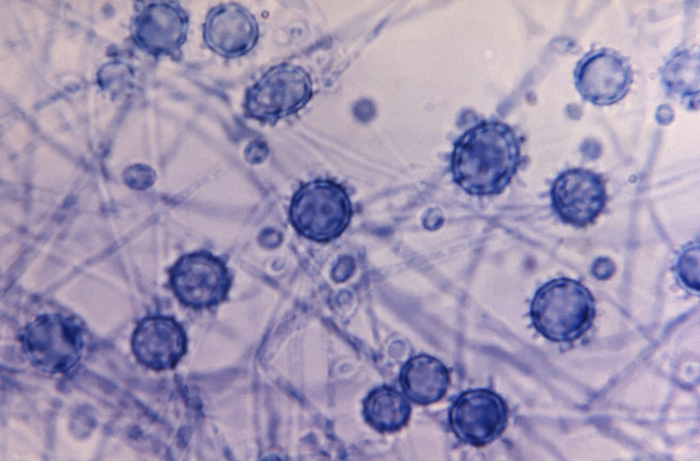
RM
Histoplasma capsulatum fungi, light micrograph
Light micrograph showing Histoplasma capsulatum fungi in its mycelial form. Depending on ambient temperature Histoplasma can form a unicellular yeast, or a multicellular mycelium as seen here. Multiple macroconidia, a form of asexual spore, can be seen as circles connected by hair-like hyphae (fungal filaments). This fungus is mostly found in soil, especially where bat and bird droppings are present. The spores can causes the disease histoplasmosis when inhaled. In most cases, people are not affected when they inhale these spores, but in some cases develop a fever, cough, and fatigue which typically self-resolve. In rare cases, particularly when patients are immunosuppressed, severe histoplasmosis can develop, and potentially affect almost any part of the body. This can lead to respiratory or bone marrow failure which can be fatal. Antifungal medication is the typical treatment course when necessary., by CDC, Dr. Lucille K. Georg/SCIENCE PHOTO LIBRARY

More
Top Categories
